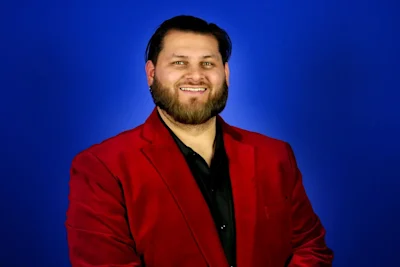Insulating Existing Walls Shared with a Neighbor


You’re cozied up in your lovely row home, duplex, or condo, enjoying a quiet evening – until you’re not.
Suddenly, you’re hit with the neighbor’s smoke wafting through the walls, or perhaps their taste in music is a little too loud through the common wall.
Does this sound familiar? You might be considering the big leap of insulating the shared wall between you and your neighbor. But where do you start?
Let’s unpack this together.
The First Step in Neighborly Relations is Getting Permission
First things first, let’s talk about permission.
Before you start dreaming of a quiet, smoke-free existence, chatting with your property manager is crucial. Why? Because altering the building structure isn’t something you can decide over your morning coffee. And hey, while you’re at it, loop in your neighbor too. After all, this project could affect them as much as it does you.
You might think it’s just a wall, but this wall could be the thin line between peace and discord.
The process could get noisy and disruptive, and giving your neighbor a heads-up is not only courteous but essential.
Plus, who knows? Maybe they’ve been losing sleep over your late-night TV binge-watching and are just as eager to jump on the sound dampening bandwagon.
Identifying Your Common Wall Insulation Motives
Here’s a thought – why are you considering this insulation project?
Is it the cigar aficionado next door or the aspiring drummer sharing your wall?
Identifying your main irritants is key. Knowing your goals is crucial, whether it’s blocking out your neighbor’s smoke or dampening the sound of their life’s soundtrack.
But here’s the catch—insulation might not be the solution to all your problems. It’s fantastic, yes, but it’s not the cure-all you’re hoping for. That’s why setting realistic expectations with your contractor is as important as deciding on the project itself.
Be clear about your pain points and desired outcomes. Clarity today means no regrets tomorrow.
Collaborate with Your Neighbor for Better Insulation
Imagine this – what if your neighbor dreams of the same quiet and smoke-free environment?
Discussing your plans might open up opportunities for collaboration, which could even snag you a better deal or easier scheduling with the contractor. Plus, it’s a great way to strengthen community ties – turning a potentially awkward situation into a win-win.
Foam Insulation for Sound Deadening
When it comes to dampening noise in your home, foam insulation can help, but there’s no guarantee.
Many factors contribute to noise, like the structure of the building, the materials used during construction, and even the placement of furniture, which can influence how sound travels.
Understanding the science behind sound transmission will help you make informed decisions alongside your insulation efforts.
The architecture of your home plays a pivotal role in how sound moves through walls.
Elements like drywall and studs act as conduits for sound transmission. Essentially, any segment featuring a rigid bond, like where the drywall meets the studs, becomes a pathway for sound.
Then there’s the ductwork and plumbing hidden in your walls, which are known to amplify the sound around a home.
Those vents channeling air from your bedroom to the furnace and beyond? They’re practically express lanes for sound to move through.
Another thing to not overlook is the role the plumbing plays in sound transmission. It’s not uncommon for homeowners to report creaks and groans coming from their pipes just from turning on the tap.
These sounds, too, find their way throughout your home, and even your neighbor’s from the shared wall.
A noticeable lack of insulation in that common wall also affects the acoustics in both homes. Without a buffer to dampen these sounds, you and your neighbor will hear each other and everything else in between.
Insulating Your Existing Walls
You’re ready to insulate your common wall with your neighbor, so what’s next?
Detailed discussions with your insulation contractor are crucial. Not all insulation is created equal, and the right type can make all the difference in addressing your specific concerns.
RetroFoam insulation, for example, specializes in retrofitting existing homes with premium injection foam insulation that can help to improve your living situation. But remember, it’s not just about injecting foam into the wall. It’s about communication, collaboration, and setting realistic expectations.
If you’d like to learn more about insulating your walls, check out the Learning Center on our website. There, you will find a ton of resources that might help you in your knowledge journey.
Related Articles
Insulating Exterior Walls from Inside with RetroFoam
Sound Dampening vs. Soundproofing Between Rooms: What’s the Difference?
About Eric Garcia
Eric brings his knowledge and training in building science, training in spray and injection foams from the manufacturers, more than eight years installing foam insulation, as well as selling and managing in the foam insulation industry. He is also BPI and Dale Carnegie certified and has taken several building science courses, including air sealing and building envelope. Eric is the Professor of Foam on our educational YouTube series Foam University. Even when Eric is off he is usually still “working” or thinking about work, but when he can get away he enjoys camping, hiking, hunting, and woodworking.



